Previously, in COMICS 101: We began our look at Marvel’s premier female solo superhero, Ms. Marvel, as she first appeared in 1977. When we left off, the character and her alter ego Carol Danvers had been introduced to the readers (or re-introduced, in Carol’s case), although due to a pesky case of amnesia, Ms. Marvel was that rare super-hero who didn’t even know her own secret identity. How long could that last? Turns out, not that long…
After a rematch with the Scorpion in issue #2 (as well as the introduction of Carol Danvers’ slightly skeevy boyfriend/psychologist Michael Barnett, about whom more later ) Ms. Marvel faces off with the robotic threat of the Doomsday Man in her third issue, in the debut of new writer Chris Claremont, who would remain on the book for the remainder of its run.
After a battle in space with the Doomsday Man, Ms. Marvel crash-lands very conveniently near the cave where Carol Danvers was first exposed to a massive dose of alien radiation back during her days as a NASA security chie
Though shielded from the impact of the explosion by Captain Marvel, the radiation affected her nonetheless, transferring unto her much of Mar-Vell’s Kree-born powers (so long as she was wearing her costume), and even bits of his personally (this being just the first of many times poor Carol’s mind has been monkeyed with). Being back at the cave jogs Carol’s memory a bit, and while her dual-identity problems would continue for a while, she at least now knows who she is.
In the issues that followed, Ms. Marvel would slowly begin to dip her toe into the Marvel Universe proper, crossing paths with Avengers like the Vision (with the two naturally fighting when first they meet due to a misunderstanding, because that’s what superheroes do)…
…as well as long-established villains like MODOK:
In fact, it was MODOK who moved Ms. Marvel along to the next stage of her evolution, when, after kidnapping her in an attempt to replicate her powers, he inadvertently led her to realize that her powers were no longer costume-based, but were instead permanently a part of her:
MODOK, it must be noted, has the most literal-sounding weaponry of any supervillain. I mean, really, what kind of a gun goes “SHOT!”?
This was some of Claremont’s earliest writing work, and it must be admitted that it shows much less of the craft and subtlety that we’d later come to see on his landmark X-Men run. The stories aren’t bad, but they very much feel like somewhat run-of-the-mill Marvel comics of the era. Disposable. And although Claremont, who later on justly earns his reputation for writing strong female characters, is trying his best to handle the feminist aspect of the series, there are occasional left turns into weirdness, like a moment of Carol Danvers’ chauvinist father referring to his daughter’s “shapely tuchus.” Yuck. Carol’s starined relationship with her father would continue throughout the series’ early run.
There was also the semi-creepy relationship with the aforementioned therapist and would-be boyfriend Mike Barnett, who had his own plans for Carol Danvers’ future, and they didn’t include Ms. Marvel:
Should he really be dating a patient? I think New York State has rules on that sort of thing.
The art also tended to be a little on the pedestrian side, although you would occasionally get gems like this issue by Carmine Infantino:
The series kind of meandered along until issue #19, when Ms. Marvel finally “met” her namesake, Captain Marvel, and after the two dispose of Ronan the Accuser, Carol and her old friend Mar-Vell have a long-overdue talk:
Which leads, of course, to — new costume!
Which is where we’ll pick up next week.

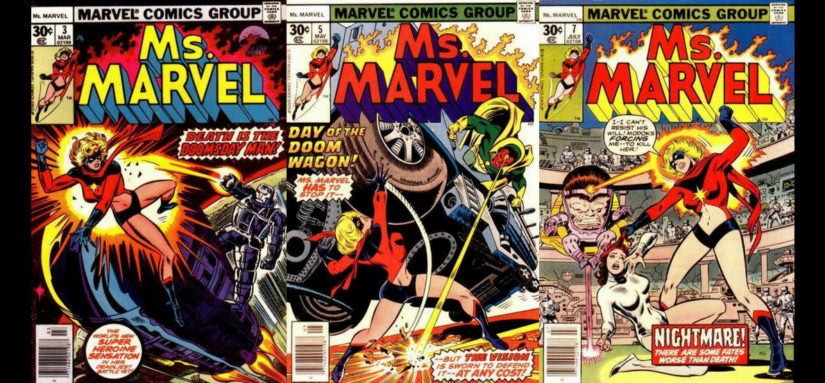
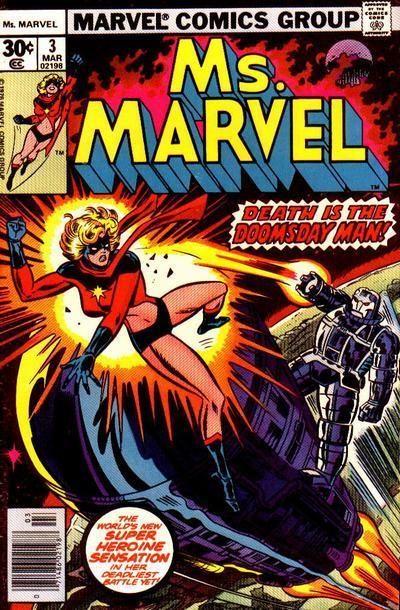
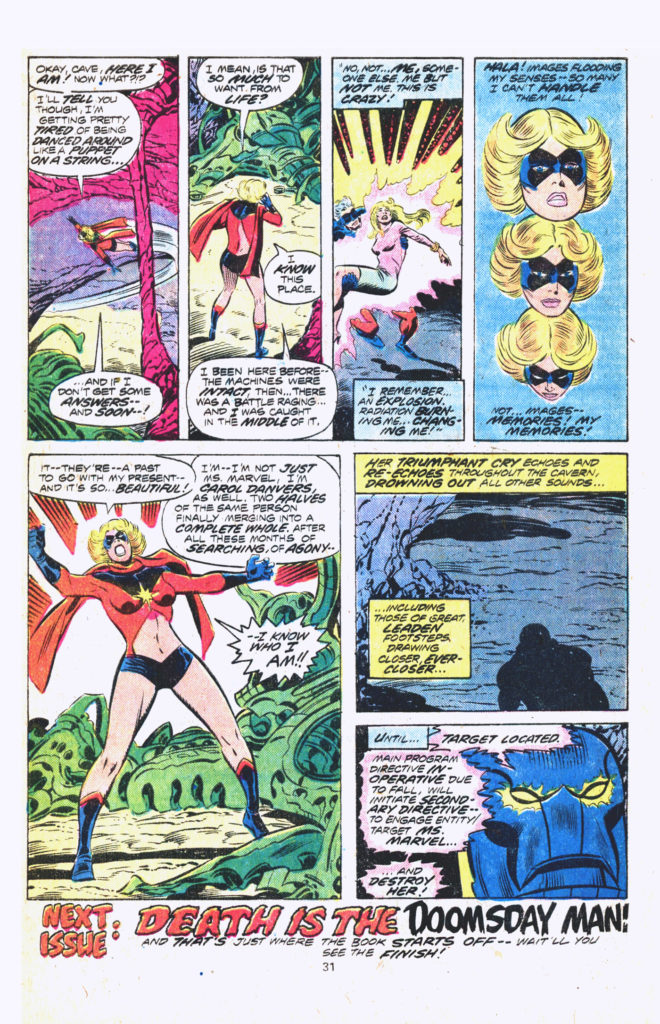
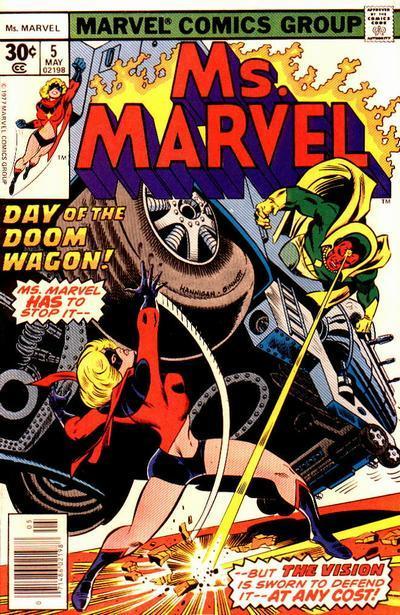
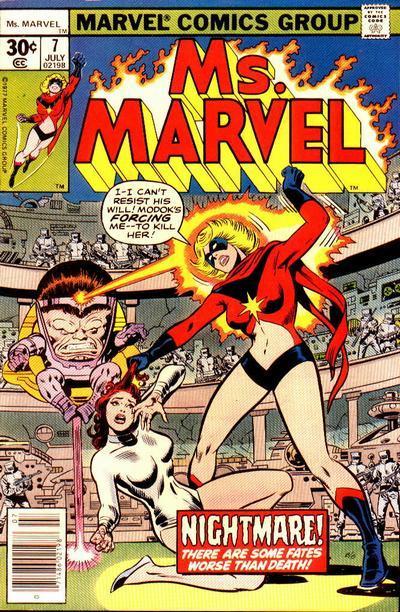
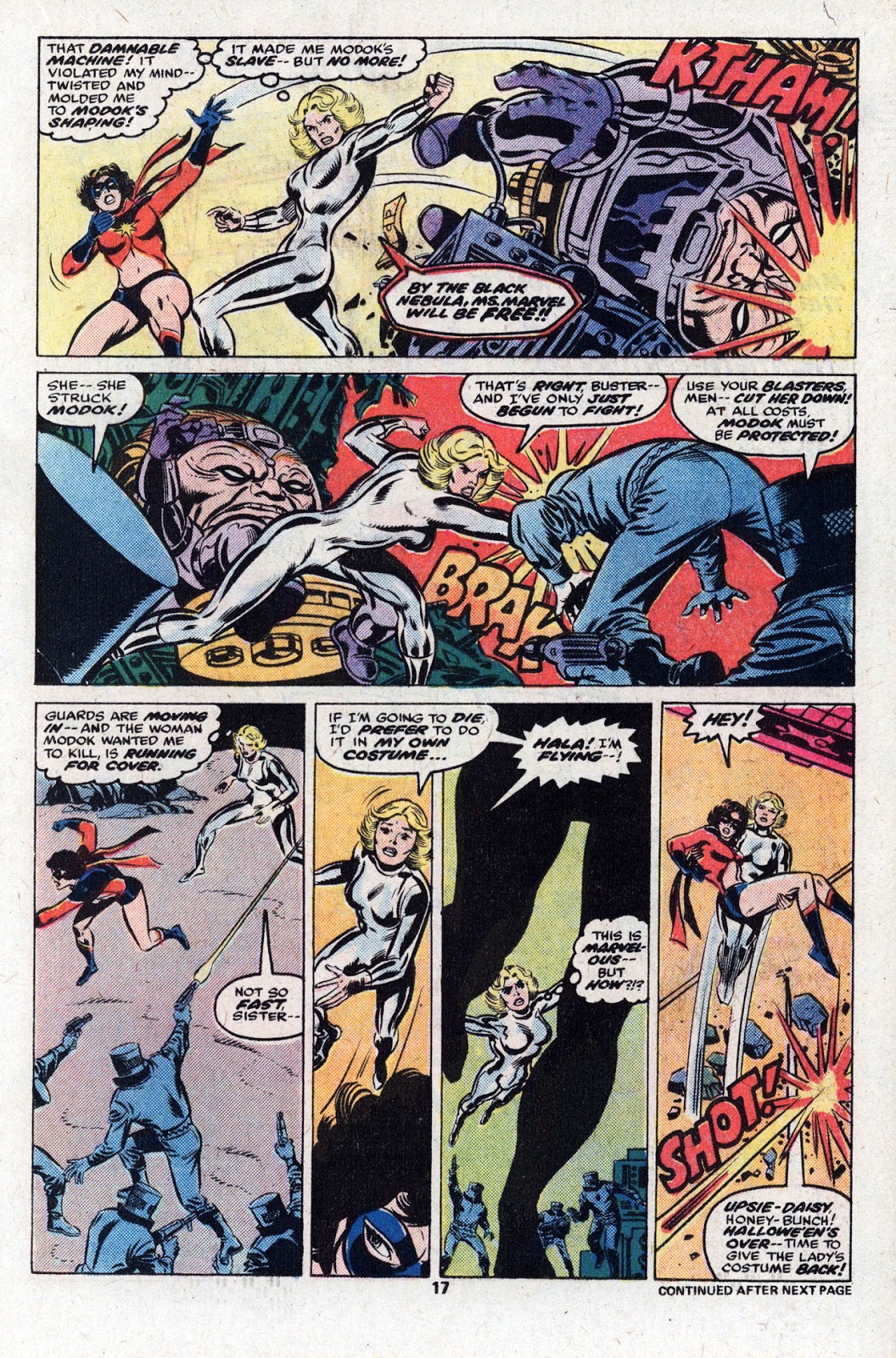
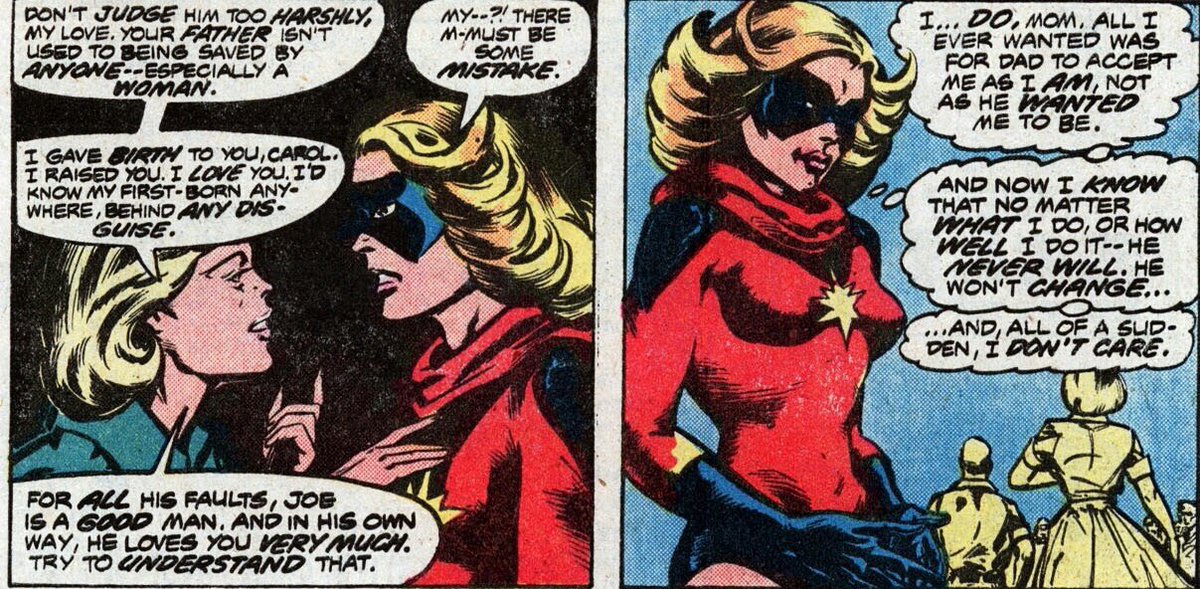
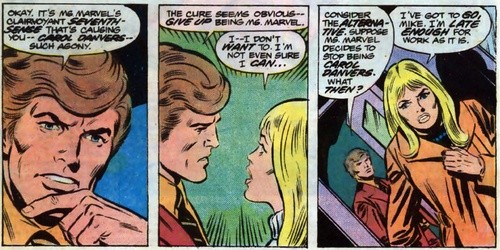
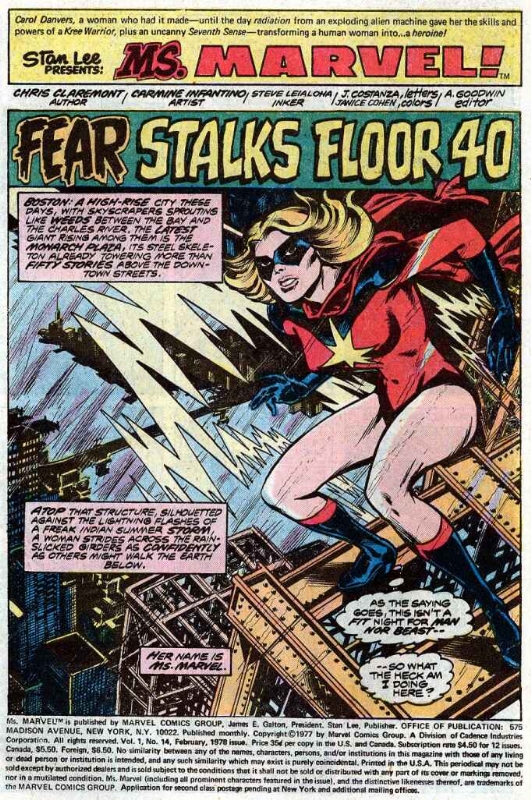

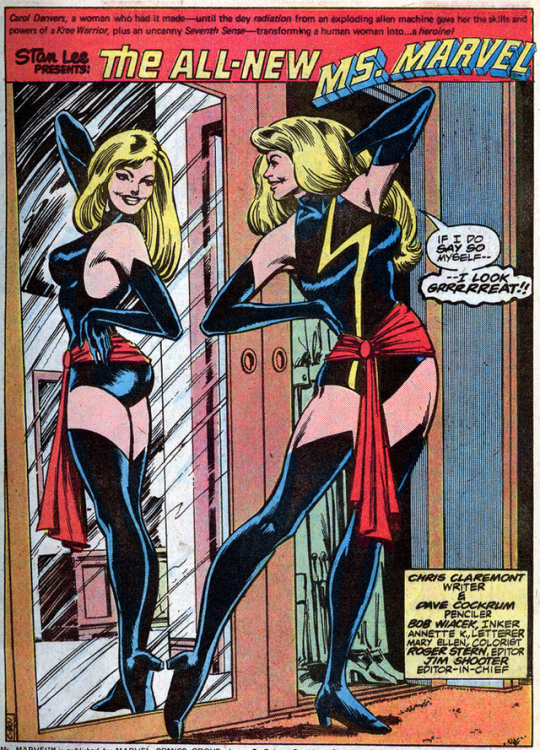
Comments are closed.